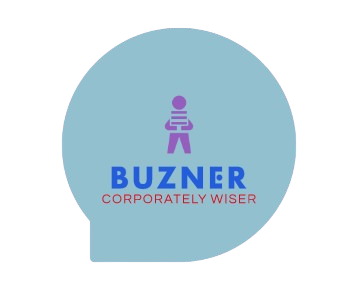A five-force model is a framework for identifying the competitive
forces that shape a firm’s market share. It is used to explain how five forces
— product, channels, distribution, and market – impact a firm’s ability to
generate profits and capture value. The five-force analysis is frequently used to
explain why a firm is or is not profitable, or to explain why a particular
product is or is not successful. It is a framework for analyzing a firm’s
competitive dynamics and opportunities.
Potor Five forces Model, or Sornette’s five forces, is a framework
for analyzing competition and industry structure and is widely applied in
economics, management, and other fields. It is based on the premise that there
are 5 principal forces or “firms” driving competitive behavior in the industry,
including four external forces and one firm-specific force.
The Potor Five forces Model is one of the most well-known models
of inter-organizational relations. It has been used to explain how
inter-organizational relations are formed and how they may be used to manage
the relationship with a partner or to influence the behavior of other entities
in the value chain.
This theory is based on the concept that there are five forces
that determine the competitive intensity and attractiveness of a market.
Porter’s five forces help to identify where power lies in a business situation.
This is useful both in understanding the strength of an organization’s current
competitive position, and the strength of a position that an organization may
look to move into.
Porter’s five forces model is a strategic management tool that
helps identify competitive pressures in a particular industry, and how those
competitive pressures will affect an organization’s profitability.
The five forces model helps an organization identify how its
position in a market is changing. It considers the impact of the five forces on
an organization’s profitability, which may help the organization to improve its
position, and subsequently its profitability by:
1) Power: how much power or
control an actor (such as a business, organization, or individual) has over
another actor (such as a competitor, another business, another organization,
etc.
2) Scope: the impact that the actor has on others in the industry;
3) Location: the geographical location of the business
The model by Michael Porter, an American business theorist who
first described the model in his Harvard Business Review article “Why
Competitive Strategy is the Business of the Future” in 1983, is based on the
premise that there are five principal forces or “firms” driving competitive
behavior in the industry, including four external forces and one firm-specific
force.
These forces are:
The threat of new entrants.
New entrants put pressure on current organizations within an
industry through their desire to gain market share.
New entrants can be seen as a threat, as they can provide products
and services similar to those provided by current firms. Thus new entrants may
have the potential to drain demand and reduce profits relative to the current firm.
Because of the entry of new competitors, incumbent firms would
rather lower their costs than lose market share. They may also be more nimble,
with the ability to bring their products to market faster, and offer them to
consumers at lower prices than the new entrants.
Barriers to entry restrict the threat of new entrants. If the
barriers are high, the threat of new entrants is reduced, and conversely, if the
barriers are low, the risk of new companies venturing into a given market is
high. Barriers to entry are advantages that existing, established companies
have over new entrants. A new entrant in a market, such as a new drug or a
plant that is not widely cultivated, may put pressure on prices, ruffle
feathers, and cause resentment among the entrenched players.
The most attractive segment is one in which entry barriers are
high and exit barriers are low. It is worth noting, however, that high barriers
to entry almost always make exit more difficult. Michael E. Porter lists 7
major sources of entry barriers:
Each company tries to keep its competitors out of the market. This
is called the “barriers to entry.” Sometimes a company can keep competitors
away by being close to customers or by being better at what it does. Other times,
companies can keep competitors away by using legal or illegal means.
Industry giants, such as Intel and Boeing, have a huge advantage
over upstart startups. They are able to access cheap capital, build their
brand, and get their products into the hands of customers. These giants can
also wield tremendous power over government regulators, lawmakers, and the
media who can help them overcome barriers to entry. However, there are ways to
overcome these barriers and create an environment that favors new companies.
The world is full of barriers to entry. These range from
regulatory red tape and complex licensing requirements to the difficulty of
raising capital and the risk of fraud and theft. However, there are ways to
reduce barriers and increase opportunity. In his book.
The threat of substitution.
Where close substitute products exist in a market, it increases
the likelihood of customers switching to alternatives in response to price
increases.
Consumers often respond to price increases by looking for
alternatives. Many companies rely on this tendency to keep their prices
competitive, but when consumers have many close substitutes for a product, they
become less likely to switch. This is often the case with gas and electricity,
which are widely available and can be powered by a variety of other energy
sources. When the price of gas and electricity increases, consumers are often
forced to consider other options.
Consumers have shown a willingness to respond to price increases
by switching to a similar product or brand rather than continuing to purchase
the product that has increased in price. This is often referred to as the
substitution effect. With the introduction of close substitute products in a
market, the substitution effect is often the largest impact on consumer
behavior. The introduction of a close substitute product in a market will
increase the likelihood that consumers will switch to the substitute product in
response to a price increase.
Introduction to substitution: the idea that if one product is
becoming more expensive, consumers are likely to look for alternatives in order
to save money. This is most likely to occur when a close substitute product
already exists in the market. This means that if a product is becoming more
expensive, consumers are likely to look for alternatives in order to save
money This is most likely to occur when a close substitute product already
exists in the market.
Competitive rivalry.
The main driver is the number and capability of competitors in the
market.
The unprecedented growth of ride-sharing services such as Uber and
Lyft has led to intense competition in the transportation market. This has
caused the prices of these services to decrease, allowing them to become more
accessible to consumers. The increased competition has also led to better
services, better quality vehicles, and the creation of new transportation
technologies such as autonomous vehicles. This has significantly increased the
number of competitors in the market, which has led to decreased prices and
better services for consumers.
The market for internet services in the United States is becoming
increasingly competitive. New players have entered the market and have been
able to provide internet service at a lower cost than the large existing
providers. This has led to a decline in revenues for the large providers, who
have responded by introducing price increases and reducing the amount of internet
service they provide to customers. This has only served to reinforce the
downward trend in customer demand, which is likely to result in further
decreases in the market share of the large providers.
The biggest driver of online shopping growth has been the number
and capability of online retailers in the market. As online retailers have
expanded their product and service offerings and invested in technologies to
improve the customer experience, shoppers have responded by turning to the
internet to purchase a wider range of merchandise than ever before. This has
created a strong market for online retailers, which have been able to capture a
larger share of the retail dollar than ever before. This has forced traditional
retailers to adapt if they want to stay competitive.
Buyer power.
An assessment of how easy it is for buyers to drive prices down.
For buyers, the power to drive down prices is one of the most attractive
features of a digital marketplace. In traditional markets, sellers are often
able to raise prices without justification, leaving buyers feeling powerless.
In a digital marketplace, buyers are able to force sellers to lower prices when
market conditions dictate. This has the effect of increasing market efficiency
and reducing the cost of goods for buyers.
The price of a product is an important factor when deciding which
to buy. If a product is on offer and is the same price as a similar product
from a different brand, it is tempting to buy the product that is on offer.
However, the story is often different when the offer price is only for a
limited period of time. In this situation, many people would prefer to wait
until the offer has ended, even if it means buying the more expensive product.
The retail landscape is changing. The internet has enabled
consumers to access an unprecedented variety of products at the lowest prices
imaginable. This has put a lot of pressure on traditional retailers and forced
them to compete on price. But it has also enabled consumers to shop around for
the best deals and drive prices down even further.
Today, buyers are more powerful than ever. We can search for a
product on our phones and buy it from the other side of the world for less than
it would have cost to buy it from a local retailer. In fact, the internet has
allowed buyers to access unprecedented amounts of information about the
products they’re buying. This information gives buyers a lot of power.
Introduction: When it comes to buying on the internet, we’ve all
been there. You find the item you want, you click “add to cart,” and you wait.
And you wait. And you wait some more.
Supplier power.
An assessment of how easy it is for suppliers to drive up prices.
In the past few months, supply chains have come under greater scrutiny as
consumer prices rise and economic uncertainty persists. One of the major causes
of this increased scrutiny is a surge in import tariffs being placed on goods
from countries like China, which has led to higher prices for goods in the
United States. However, one of the main causes of this increased supply chain
scrutiny is a new report from the Federal Reserve showing that it is relatively
easy for suppliers to drive up prices. The report, which was released in
conjunction with the Consumer Price Index for June, found that the prices of
goods and services increased by 0.3% over the past month.
The economy is currently in a healthy position, with consumer
spending driving the economy and job growth across the country. However, the
economy is still vulnerable to disruptions in the supply chain, which can cause
prices to rise and have an impact on the economy. There have been numerous times
in the past few years when a disruption in the supply chain, such as a strike
at a major port, caused prices to rise and had a significant impact on the
economy. The ability of the supply chain to affect the economy is one of the
most pressing issues facing the country today.
New documents are the latest technology for keeping up with the
latest legal trends and practices. They offer the best mixture of convenience,
accessibility, and reliability. They’re also an investment — you want to make
sure you have the right one for your needs. But which ones are worth your time
and money?
The world of supply chains is often described as a series of
invisible hands. They quietly connect producers with consumers, transforming
raw materials into finished products. Yet, the complexity of modern supply
chains has made it hard for the public to understand where their products come
from and what happens along the way. Recently, however, a handful of companies
have begun to use technology to bring the supply chain to light.
Recently, a new report from the Federal Reserve of New York found
that many suppliers have begun to raise prices when they know their competitors
will be forced to match their price. This is called “competitive completions.”
While competitive completions have been a common occurrence in the past, the
ability to increase prices has become much easier over the last year. This is
because technology has made it possible for suppliers to gather data on their
competitors’ pricing, making it easier for them to raise prices.
What benefits does Porter’s Five Forces analysis provide?
Five forces analysis helps organizations to understand the factors
affecting profitability in a specific industry, and can help to inform
decisions.
Three forces analysis helps organizations identify the five
influential forces affecting profitability in a specific industry. This process
is sometimes known as a Five Forces analysis. The three forces analysis helps organizations
understand the five primary influences that shape effectiveness in a particular
industry.
The five forces analysis is a framework designed to help managers
understand the competitive environment in which their business operates. It
places the firm’s strategy in a broader context so that it is better suited to
understand and respond to strategic, competitive and economic changes. Info
uses the framework to help you think about: the structure of your industry and
the market conditions around it; your firm’s strengths and weaknesses and how
they are likely to change; the competitive environment; and the sources of
value and strength for your firm.
Five forces analysis helps organizations to understand the factors
affecting productivity in a specific industry. It can help to inform decisions
and provide insight into competitive pressures, for example, how to avoid price
wars in sectors where competition is intense, such as in consumer goods or
banking.
Dos and Don’ts of Model.
· Use
this model where there are at least three contestants in the market
· Consider
the impact that government has or may have on the industry
· Consider
the industry lifecycle stage – earlier stages will be more stormy
· Consider
the dynamic/changing physiognomies of the industry
· Avoid
using the model for a single firm; it is designed for use on an industry basis.





